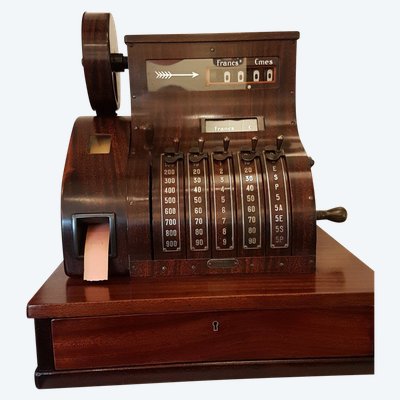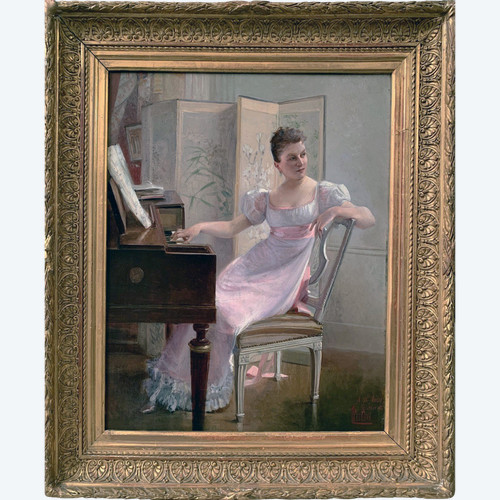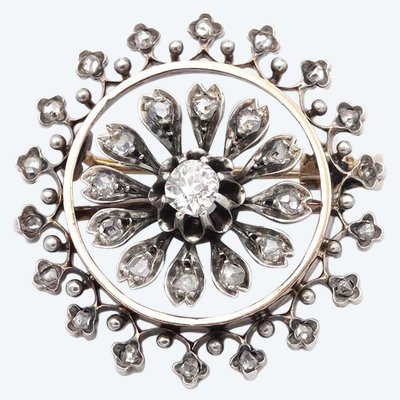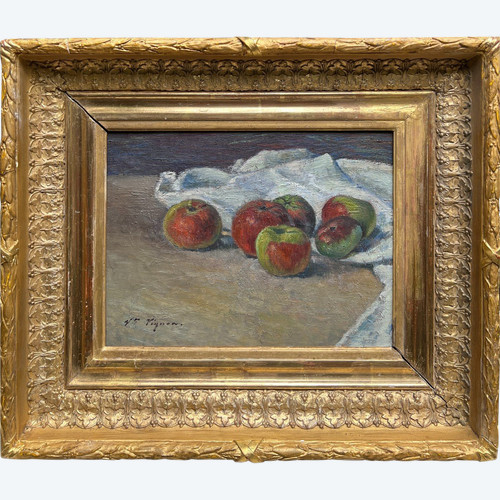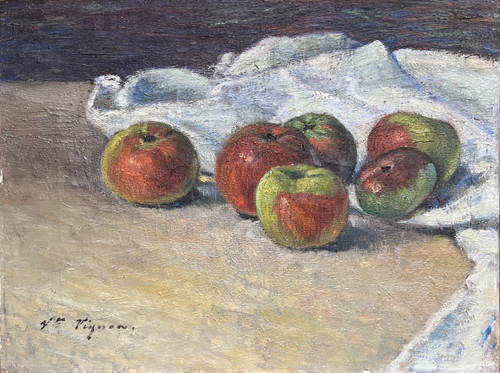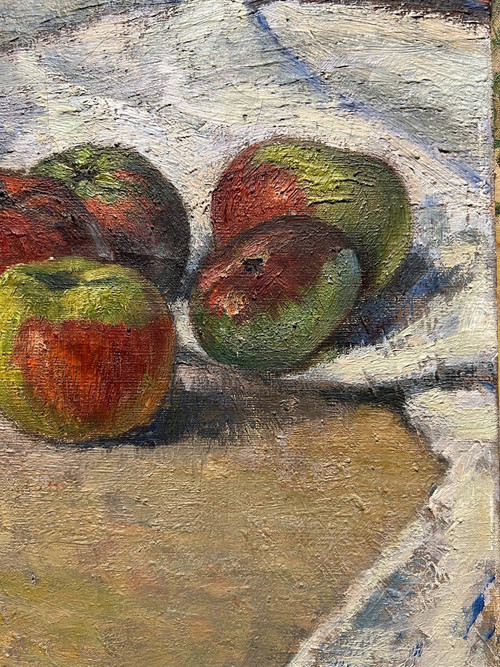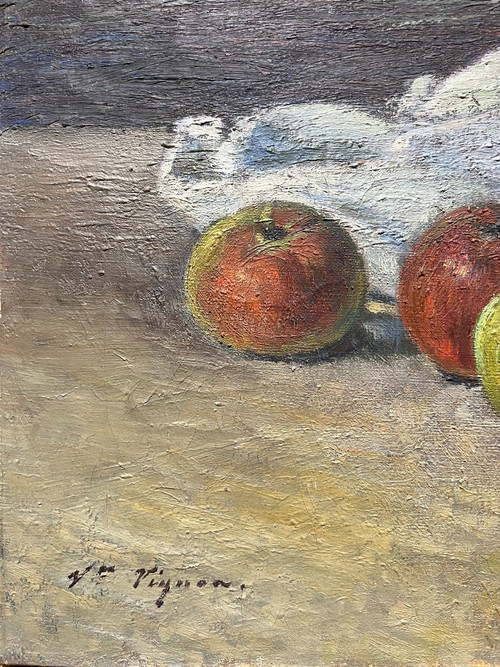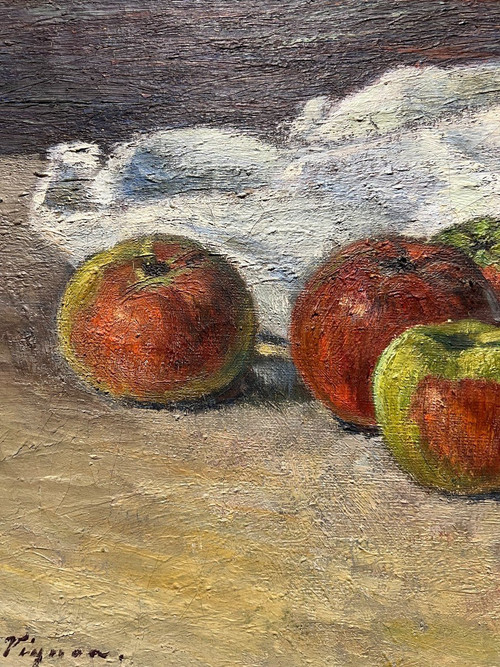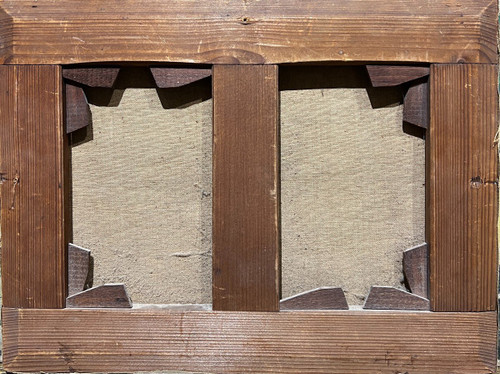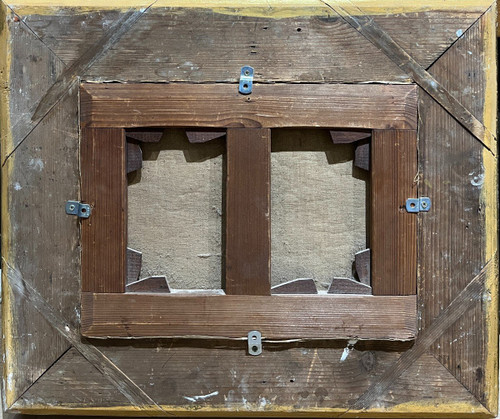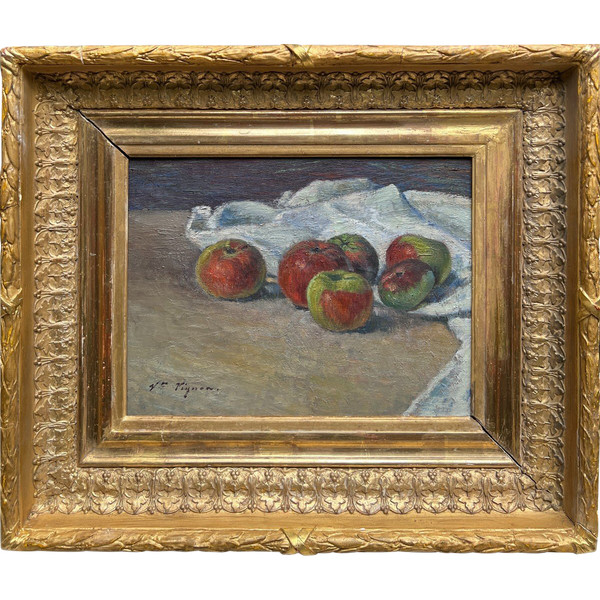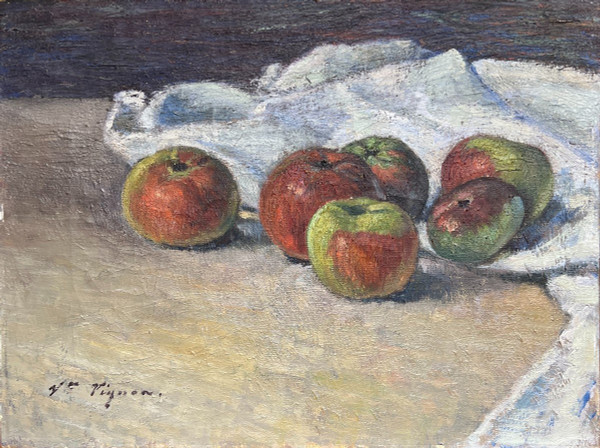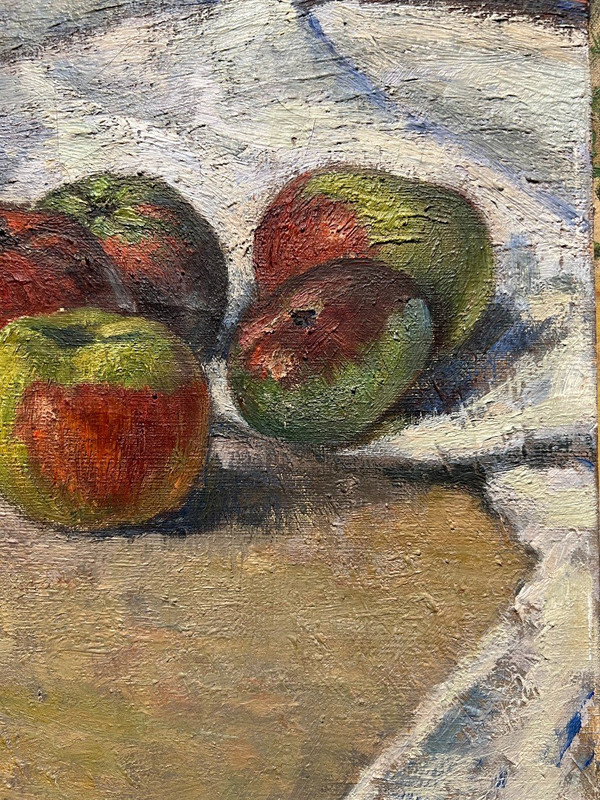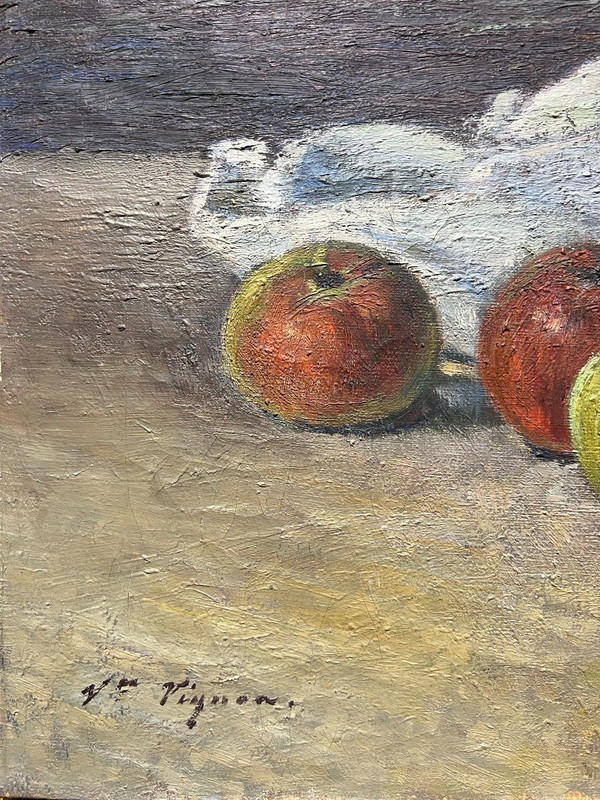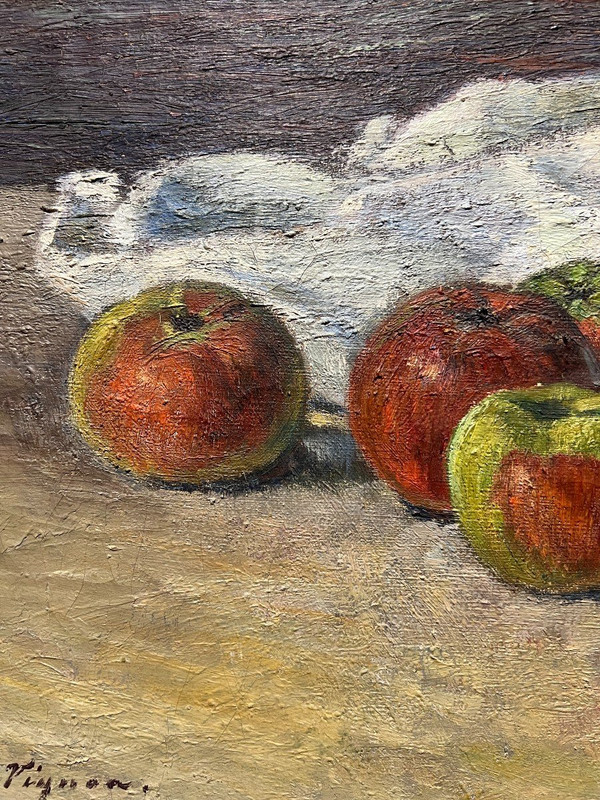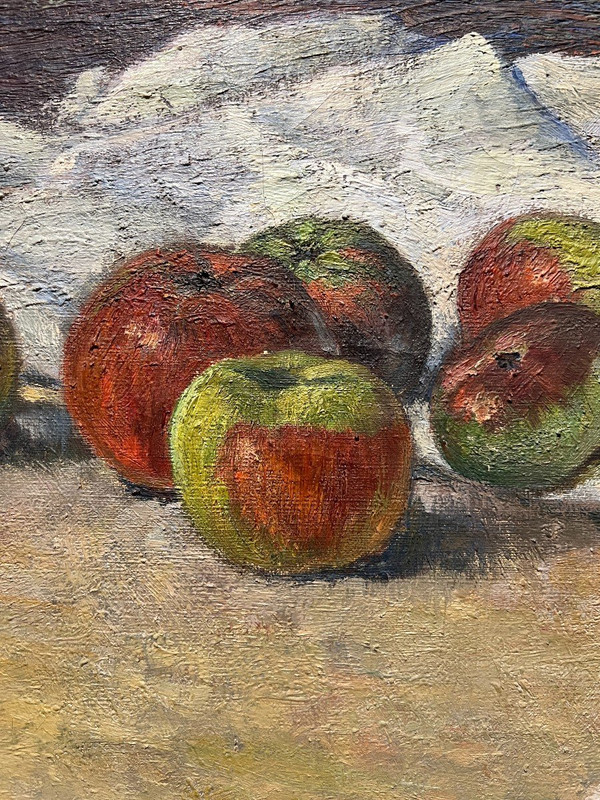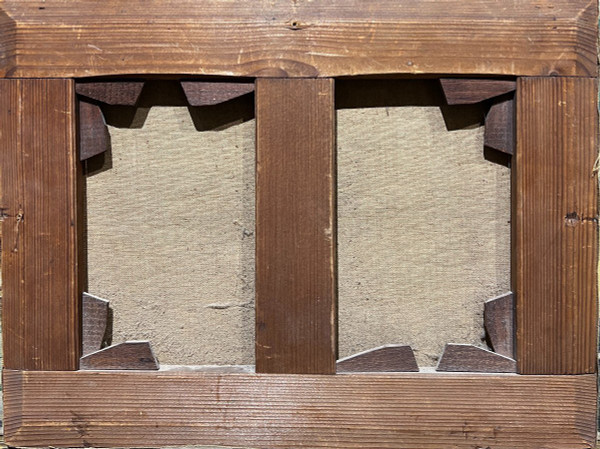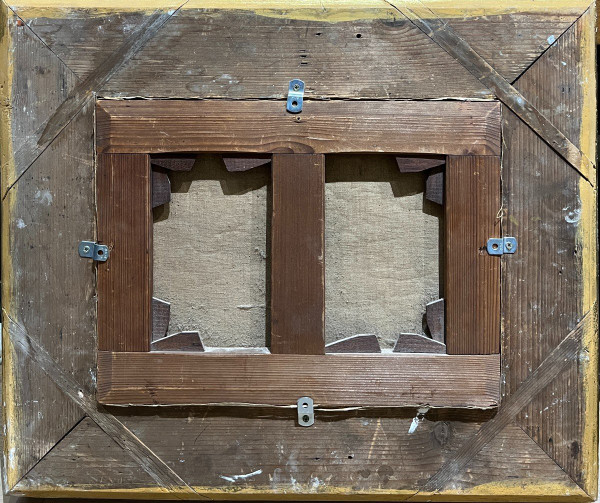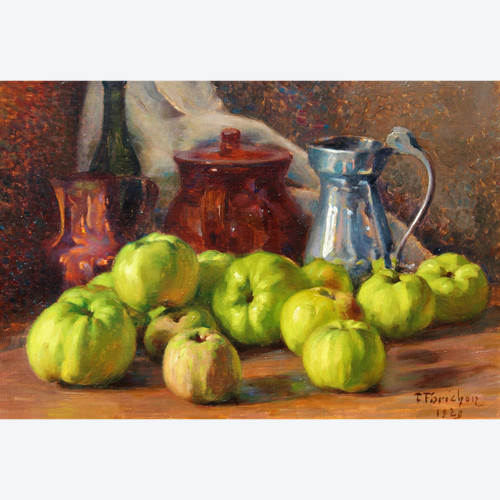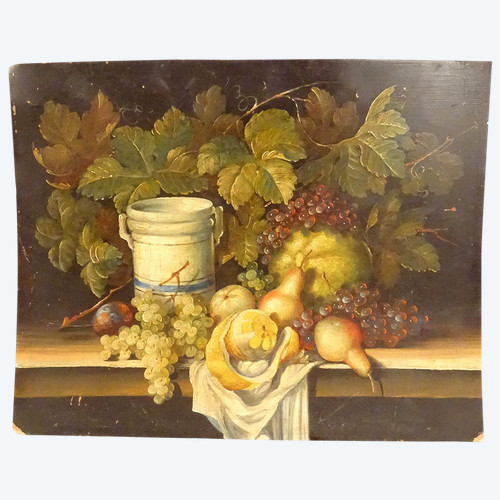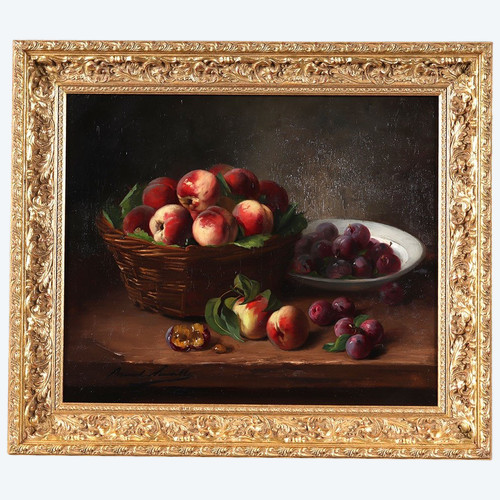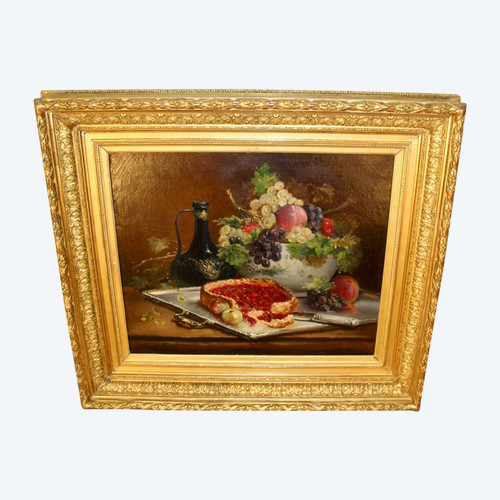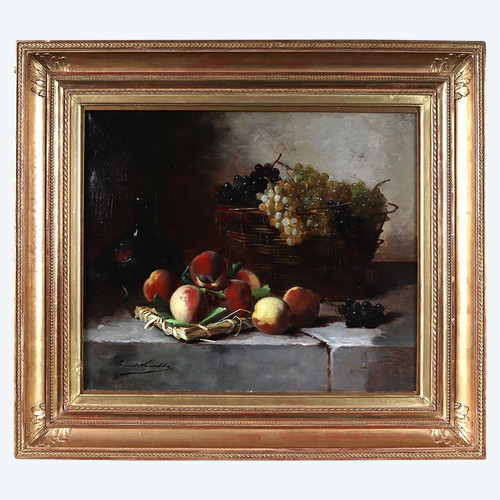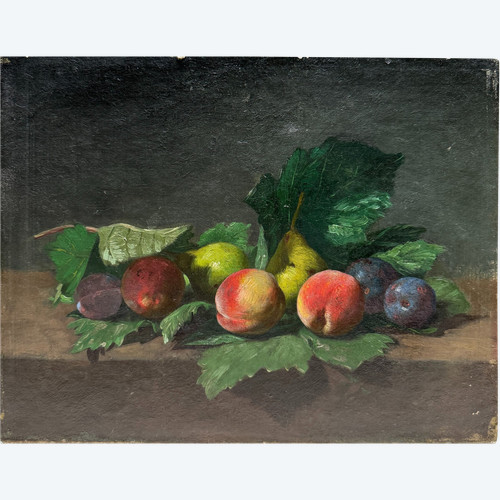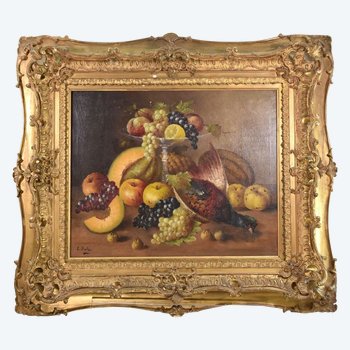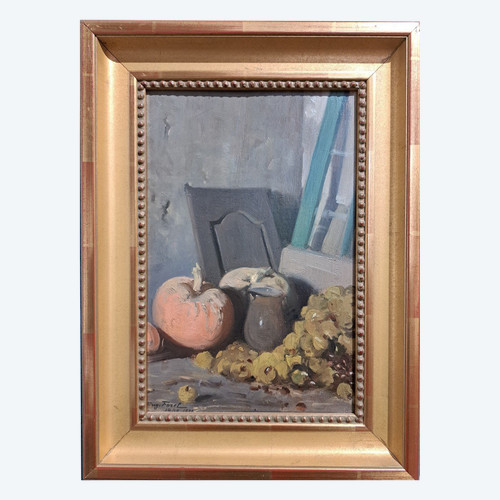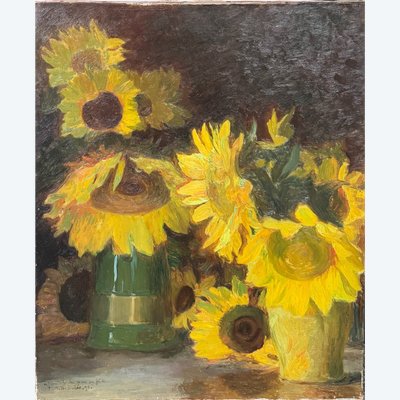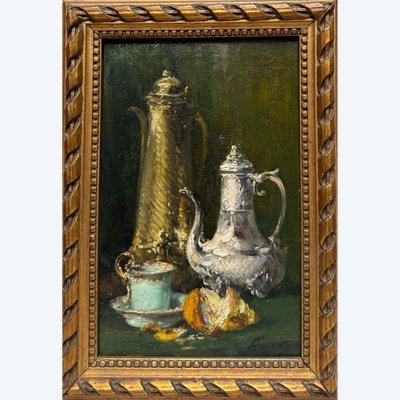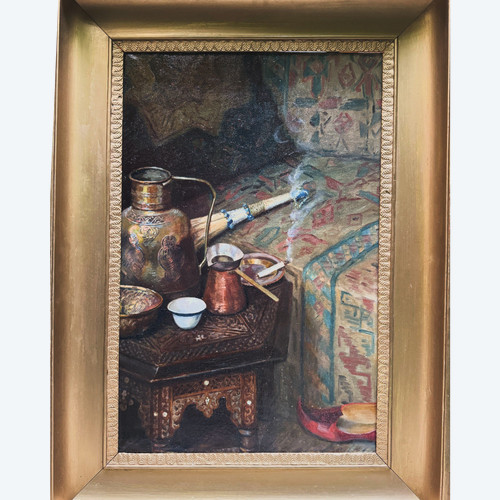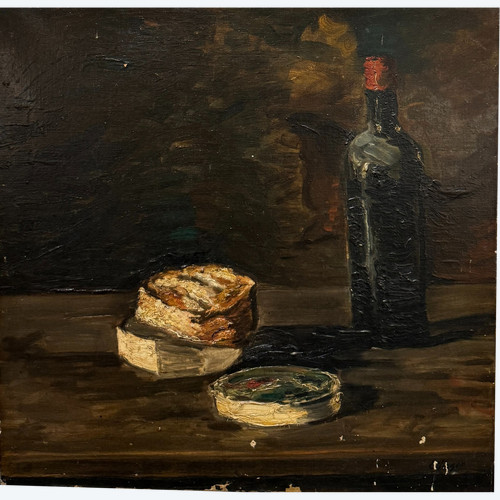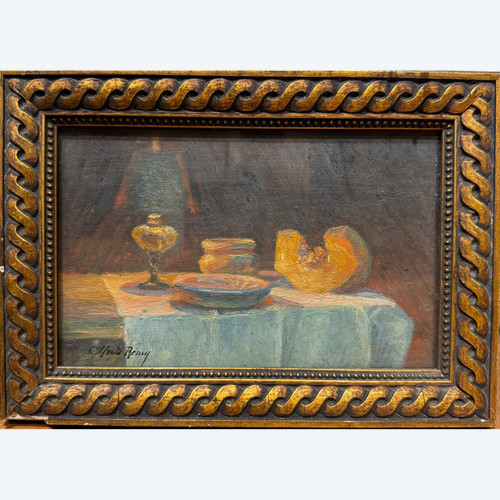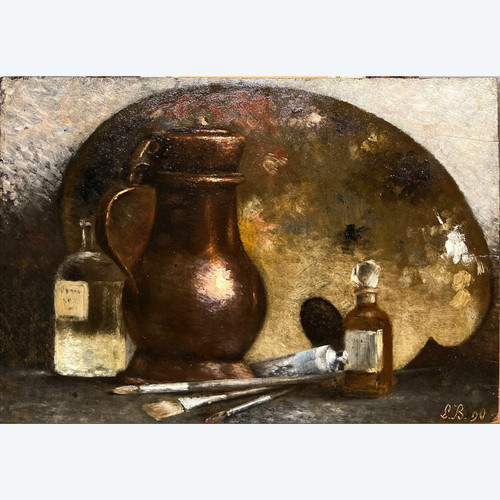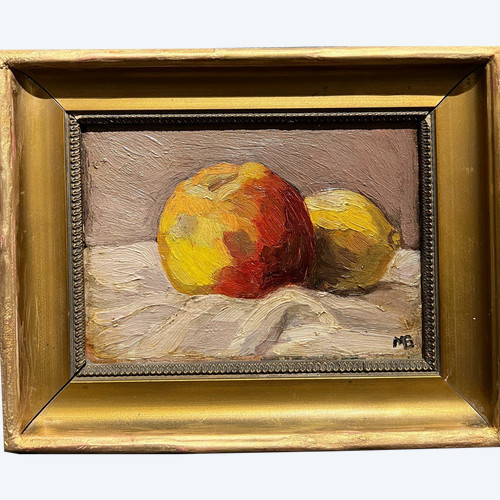This description has been translated and may not be completely accurate. Click here to see the original
Victor Vignon (1847-1909)
Nature Morte Aux Pommes Et à La Nappe, Circa 1890
Oil on canvas
25 x 33 cm
43 x 50 cm with frame
Signed lower left
A student of Camille Corot and advised by Adolphe-Félix Cals, Vignon first worked in Clamart, then Bougival, then La Celle-Saint-Cloud, where he produced Saulaie à Bougival (1877), Le Chemin de la plaine à Bougival and La Route de la Jonchère à La Celle-Saint-Cloud1. He then moved to Pontoise, then to Jouy-le-Comte. Around 1878-1880, he moved to Auvers-sur-Oise with Camille Pissarro, Armand Guillaumin and Paul Cézanne, where he painted subjects identical to theirs: Chemin de Chaponval (1881), La Côte Saint-Nicolas à Auvers (1882), Masures à Auvers (1883).
Between 1880 and 1886, he exhibited at the Impressionist Painters' Exhibitions alongside, among others, Mary Cassat, Degas, Forain, Gauguin, Guillaumin, Berthe Morisot, Pissarro, Raffaelli, Rouart, Zandomeneghi...
Vignon had close ties with Theo and Vincent van Gogh, Dr Paul Gachet, Auguste Renoir, Caillebotte, Monet, Degas and Sisley.
In 1900, thanks to Docteur Viau, one of his paintings appeared at the 1900 Universal Exhibition. In 1903, an exhibition was organized to help him. Auguste Renoir advised Durand-Ruel to choose works from among his small formats. In 1910, Berthe Morisot's daughter Julie Manet-Rouart obtained a painting from Renoir for the sale organized in favor of Madame veuve Vignon. Among the major collectors of Victor Vignon's works were Georges Viau, whose collection was dispersed in 1907 and 1909, M. F. Stumpf, whose 1906 collection dispersal included some fifteen paintings by the artist, and Roger Marx, who had three Vignon paintings in his collection.
Today, the majority of Victor Vignon's paintings are in private collections, with only a few in public collections.
Ref: SPNPIHC9RW



